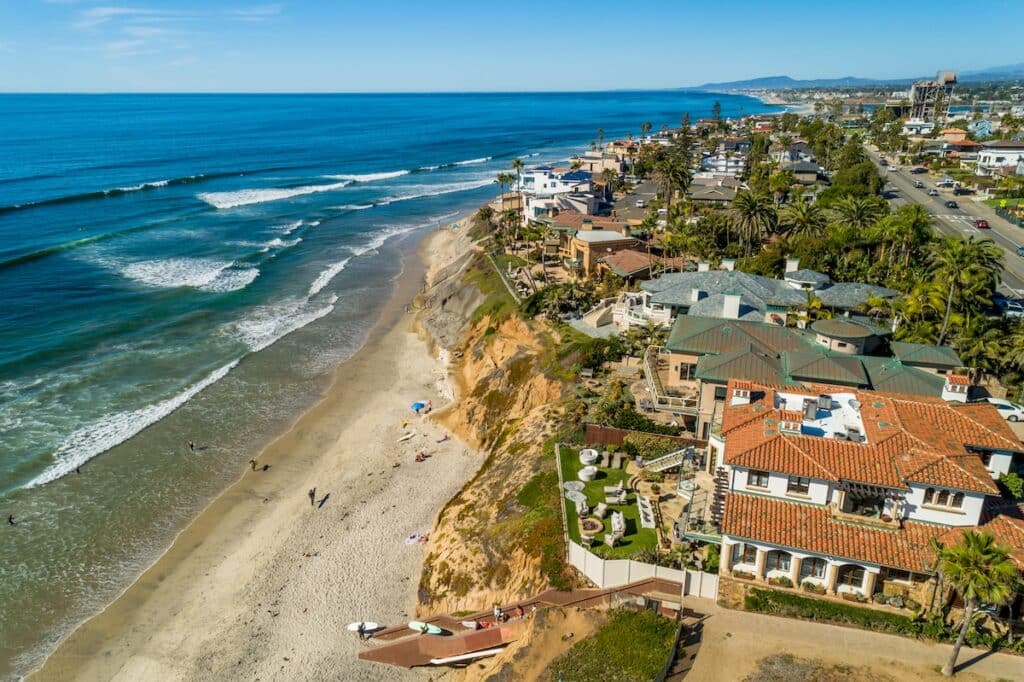Navigating the San Diego real estate market can be challenging, especially when trying to grasp the nuances of mortgage interest rates. Whether you’re a first-time homebuyer, an investor, or a homeowner considering refinancing, understanding the current mortgage interest rates in San Diego is crucial for making informed decisions.
In this article, we delve into the intricate relationship between mortgage interest rates and the San Diego real estate market, particularly in the highly desirable Coastal North County area. Whether you’re a first-time buyer, a seasoned investor, or a homeowner considering refinancing, this comprehensive guide explains the basics of mortgage interest rates, the different loan types available, and how these rates influence your financial decisions. We’ll explore key factors driving these rates, such as national economic trends, Federal Reserve policies, and local market dynamics, alongside practical strategies to secure the best rates for your needs. By the end, you’ll have the insights needed to make informed decisions and maximize your opportunities in San Diego’s competitive housing market.
Understanding Mortgage Interest Rates
Mortgage interest rates are the percentage of interest charged by a lender on a home loan. These rates dictate how much extra you will pay over the life of your loan in addition to the principal amount borrowed. Even small differences in interest rates can result in thousands of dollars saved or spent, which is why staying updated on current rates is essential.
Fixed-Rate Mortgages
A fixed-rate mortgage has an interest rate that remains constant throughout the life of the loan. This predictability makes fixed-rate mortgages popular among buyers who plan to stay in their homes long-term, as it allows for consistent monthly payments.
Adjustable-Rate Mortgages (ARMs)
Unlike fixed-rate mortgages, adjustable-rate mortgages (ARMs) have interest rates that change periodically, usually after an initial fixed-rate period. ARMs might offer lower initial rates, but they carry the risk of future increases, which could lead to higher monthly payments.
Factors Influencing Mortgage Interest Rates
Several factors influence mortgage interest rates, some of which are national, while others are specific to the San Diego market. Understanding these can help you time your purchase or refinance effectively.
1. Economic Indicators
Interest rates are heavily influenced by economic indicators such as inflation, employment rates, and GDP growth. When the economy is strong, interest rates tend to rise because lenders demand higher returns. Conversely, during economic downturns, rates often fall as the Federal Reserve lowers interest rates to encourage borrowing.
2. Federal Reserve Policies
The Federal Reserve plays a significant role in determining national interest rates. Although it doesn’t set mortgage rates directly, the Fed’s actions in controlling the federal funds rate can influence overall lending rates. For instance, when the Fed raises rates to combat inflation, mortgage rates usually follow suit.
3. Housing Market Conditions
The supply and demand within the housing market also affect mortgage interest rates. In areas like Coastal North County San Diego, where demand for homes is high, rates might be slightly higher due to the increased competition among buyers. Conversely, if the market cools, rates might decrease to attract more buyers.
4. Lender Risk Assessment
Lenders assess risk based on the borrower’s credit score, loan-to-value ratio (LTV), and debt-to-income ratio (DTI). Borrowers with higher credit scores and lower LTV and DTI ratios are considered less risky and often qualify for lower interest rates. In contrast, borrowers perceived as high risk may face higher rates to compensate lenders for taking on more risk.
5. Local Economic Conditions
San Diego’s local economy, particularly in tech-heavy areas like Coastal North County, can influence mortgage rates. A robust local economy with low unemployment and high median incomes might lead to slightly higher rates as lenders see the area as stable and desirable. On the other hand, if local economic conditions worsen, rates might decrease as lenders try to stimulate buying activity.
Current Mortgage Rates in San Diego
As of 2024, mortgage interest rates in San Diego have experienced fluctuations due to national and local economic factors. While rates are slightly higher than in previous years, they remain competitive compared to other high-cost areas in California.
Average Rates for Different Loan Types
- 30-Year Fixed-Rate Mortgage: Currently averaging around 6.5% – 7.0%, this is the most common loan type for buyers in San Diego.
- 15-Year Fixed-Rate Mortgage: Averaging between 5.5% – 6.0%, this option is popular among buyers who can afford higher monthly payments and wish to pay off their loans faster.
- 5/1 ARM: With initial rates starting around 5.0% – 5.5%, this adjustable-rate mortgage is an option for buyers who plan to move or refinance within a few years.
Historical Context
It’s important to view current rates in the context of historical trends. For instance, during the early 2000s, mortgage rates hovered around 6.5% – 7.5%, similar to today. However, in the decade following the 2008 financial crisis, rates were significantly lower, often below 4%. This historical perspective helps buyers understand that current rates, while higher than recent lows, are not unprecedented.
Impact of Mortgage Interest Rates on Your Home Purchase
Understanding how mortgage interest rates affect your home purchase is key to making sound financial decisions. Here’s a closer look at how rates impact affordability, monthly payments, and overall homeownership costs in Coastal North County San Diego.
Affordability
Interest rates directly affect how much home you can afford. As rates rise, the cost of borrowing increases, reducing your purchasing power. For instance, a 1% increase in mortgage rates can reduce your buying power by up to 10%. This is particularly relevant in high-demand areas like Coastal North County San Diego, where home prices are already at a premium.
Monthly Payments
Your monthly mortgage payment is composed of principal and interest. When rates are higher, a larger portion of your payment goes toward interest, increasing your overall monthly obligation. This is why locking in a lower rate can save you money in the long run.
Long-Term Costs
Even a slight difference in interest rates can have a significant impact on the total cost of your mortgage over time. For example, on a $1,000,000 mortgage, a 0.5% difference in interest rate could result in saving or spending tens of thousands of dollars over the life of the loan.
Strategies for Securing the Best Mortgage Interest Rate
Given the impact of mortgage rates on your home purchase, it’s essential to adopt strategies that can help you secure the best possible rate. Here are some tips tailored to the San Diego market.
1. Improve Your Credit Score
Your credit score is one of the most significant factors lenders consider when determining your interest rate. By improving your credit score, you can qualify for lower rates. This might involve paying down debts, correcting errors on your credit report, or limiting new credit inquiries.
2. Shop Around for Lenders
Different lenders offer different rates, so it’s crucial to shop around. Local banks, credit unions, and online lenders might all offer competitive rates, but their terms and customer service can vary. Comparing multiple offers can help you find the best deal.
3. Consider a Larger Down Payment
Lenders often offer lower interest rates to borrowers who make larger down payments. By putting down 20% or more, you can reduce your loan-to-value ratio (LTV), which may qualify you for a better rate. This is especially beneficial in high-cost areas like Coastal North County, where down payments can significantly impact your loan terms.
4. Lock in Your Rate
Once you’ve found a favorable rate, consider locking it in. Rate locks typically last between 30 and 60 days and protect you from potential increases before closing. Given the volatility in interest rates, locking in a good rate can provide peace of mind and financial security.
5. Pay Points
Paying points, or discount points, involves paying an upfront fee to reduce your mortgage interest rate. This can be a worthwhile strategy if you plan to stay in your home long-term, as the lower rate can result in substantial savings over time.
How San Diego’s Housing Market Affects Mortgage Interest Rates
San Diego’s unique housing market characteristics also play a role in determining local mortgage interest rates. Here’s how the current state of the market in Coastal North County is influencing rates.
High Demand and Low Inventory
The Coastal North County area is known for its desirable communities, excellent schools, and proximity to tech hubs. This high demand, coupled with low inventory, creates a competitive market where homes often sell quickly and above asking price. In such a market, lenders might offer slightly higher rates due to the perceived stability and desirability of the area.
Rising Home Prices
Home prices in Coastal North County San Diego have been on the rise, reflecting the area’s attractiveness to both local and out-of-state buyers. As home prices increase, the loan amounts also rise, which can affect interest rates. Lenders may offer more competitive rates for larger loans, but they may also adjust rates upwards in response to the increased risk.
Local Economic Conditions
The local economy in Coastal North County is bolstered by the presence of tech companies, a strong job market, and a high standard of living. These factors contribute to a robust housing market, but they can also lead to higher interest rates as lenders perceive the area as a safe investment with lower default risks.
Future Trends in San Diego
Predicting future mortgage interest rates is challenging, but understanding current trends can offer some insights. Here’s what buyers and homeowners in San Diego should keep in mind.
Potential Rate Increases
Given the current economic environment, including inflationary pressures and potential further actions by the Federal Reserve, mortgage rates may continue to rise. Buyers considering purchasing or refinancing may want to act sooner rather than later to lock in current rates.
The Impact of Tech Industry Growth
As the tech industry continues to grow in San Diego, particularly in areas like Coastal North County, it may contribute to a more competitive housing market. This could lead to higher home prices and potentially higher interest rates as lenders respond to the increased demand.
Government Policies and Incentives
Government policies, such as changes in tax laws or new homebuyer incentives, could also impact mortgage interest rates. Staying informed about potential legislative changes can help you make strategic decisions regarding your mortgage.
Making Informed Decisions in San Diego’s Real Estate Market
Knowing how mortgage interest rates work is essential for making smart real estate decisions in Coastal North County San Diego. Staying up to date on current rates, market trends, and future projections can help you make informed financial choices that support your long-term goals. For a deeper dive into the latest mortgage rates, check out our article on Best Mortgage Rates for Luxury Homes in Coastal North County San Diego.
Whether you’re buying your first home, refinancing an existing mortgage, or investing in property, it’s crucial to consider how interest rates will impact your overall financial picture. For personalized advice tailored to your unique situation, contact Kelli Miller today. With years of experience in the San Diego market and a wide range of lenders who can help regardless of your financial situation, let Kelli be a resource and guide you through the complexities of the local real estate landscape.



